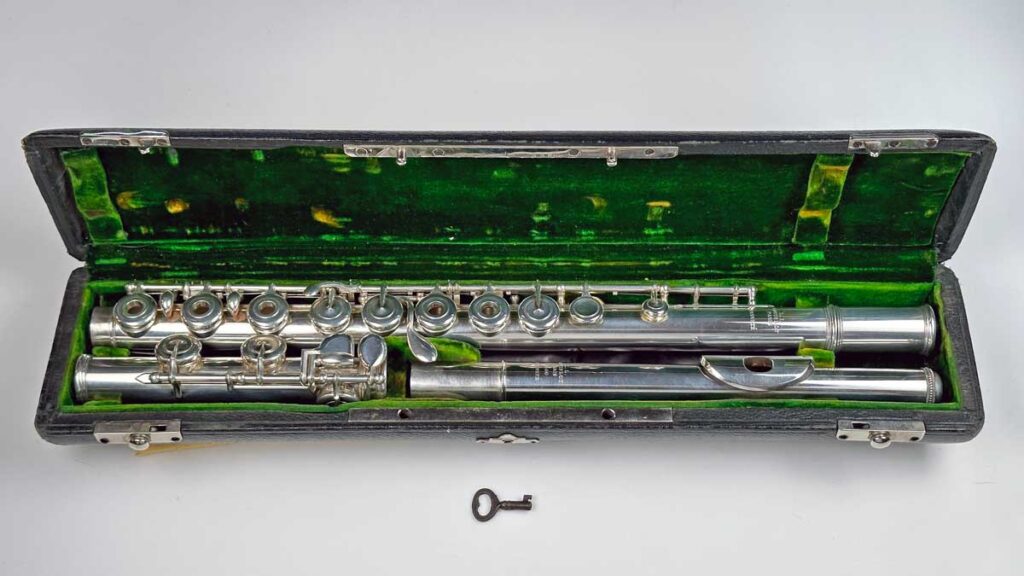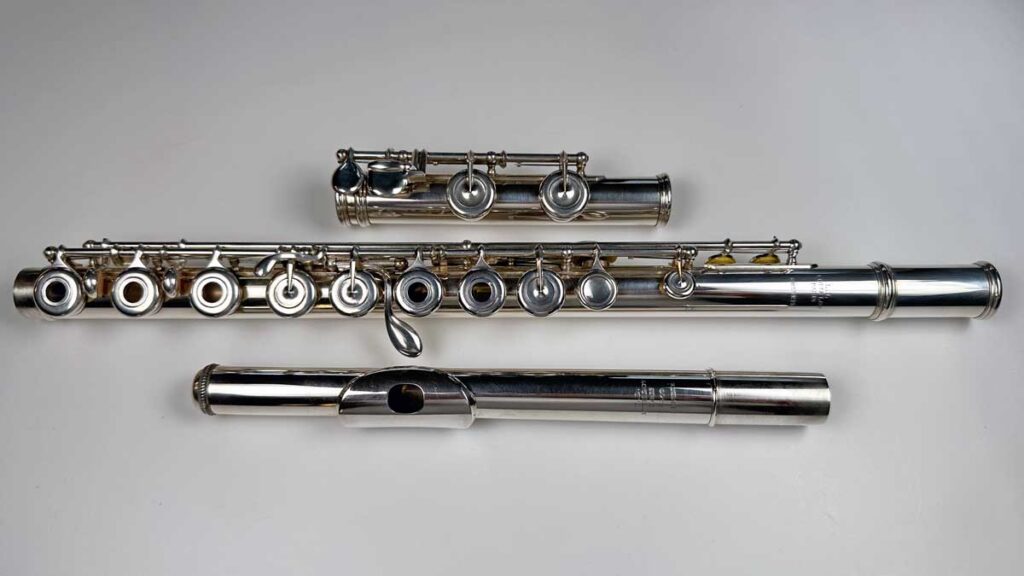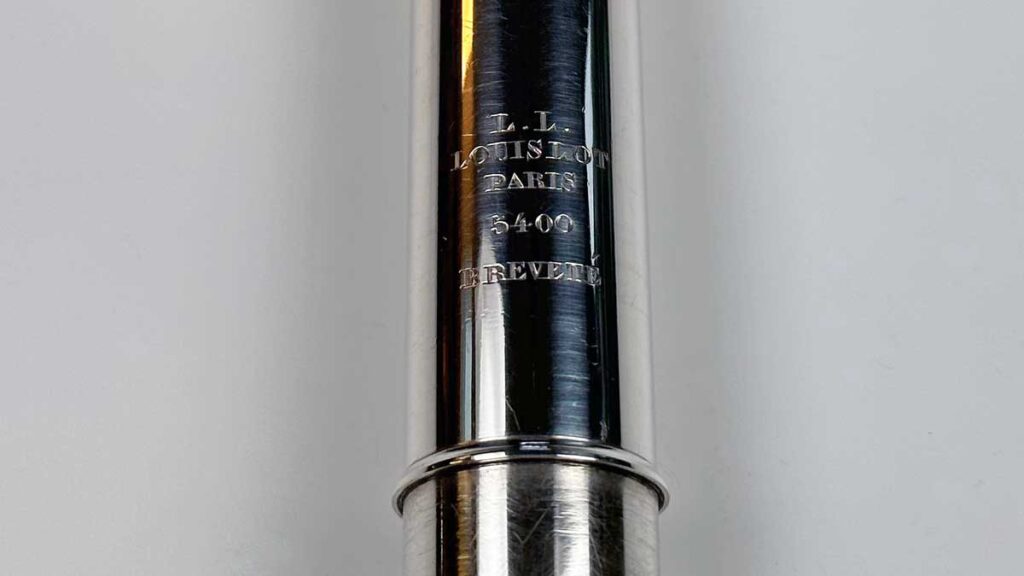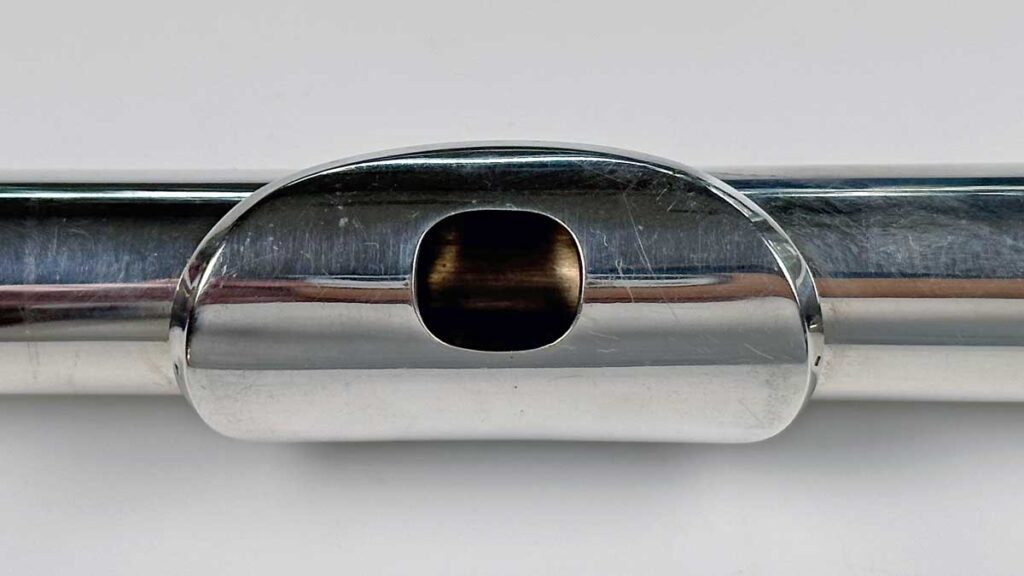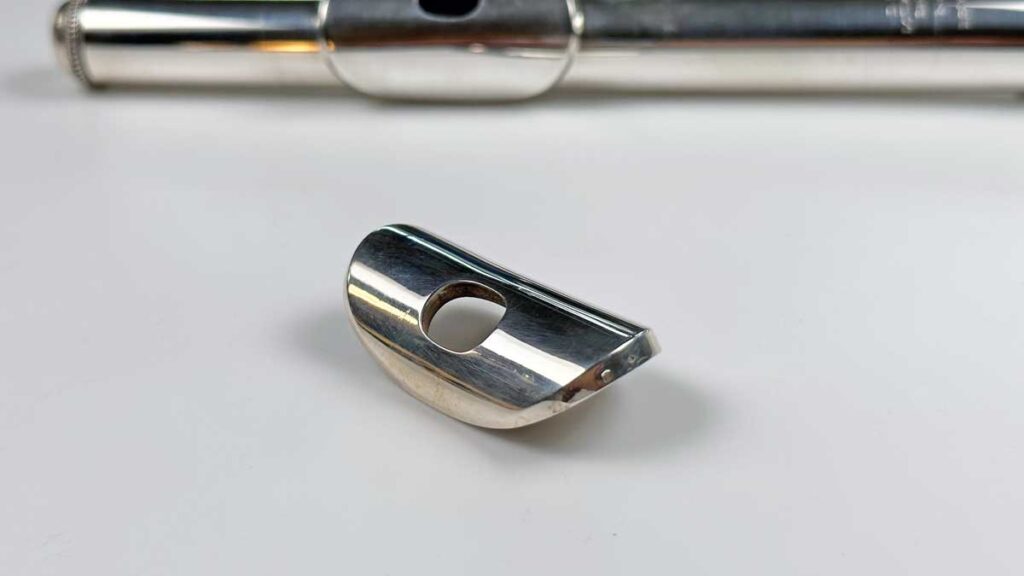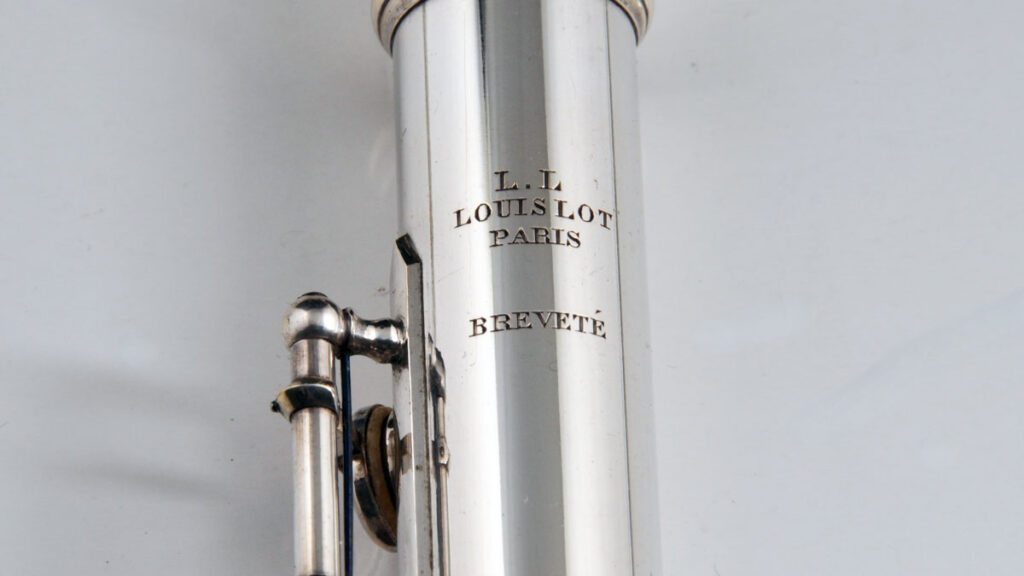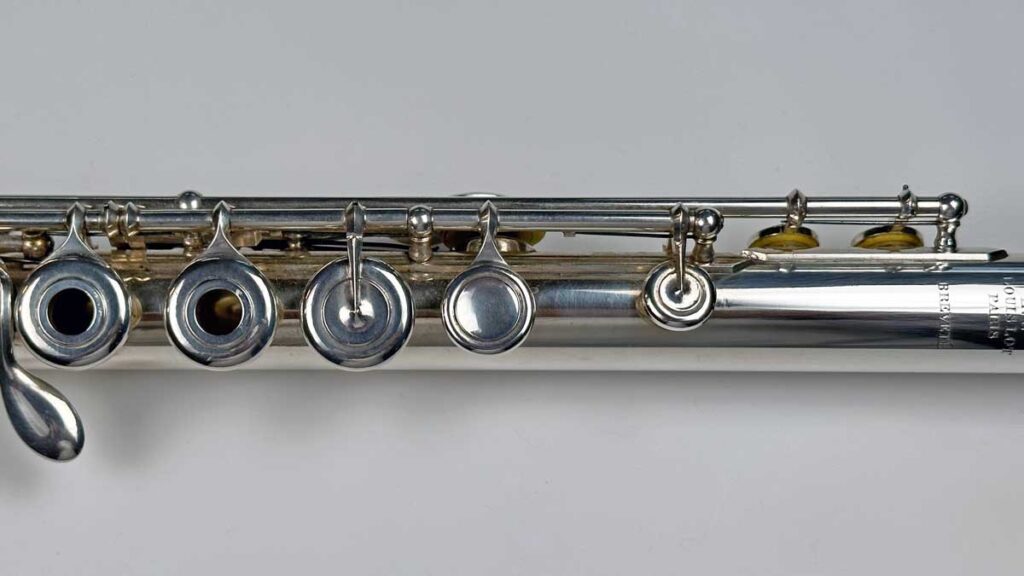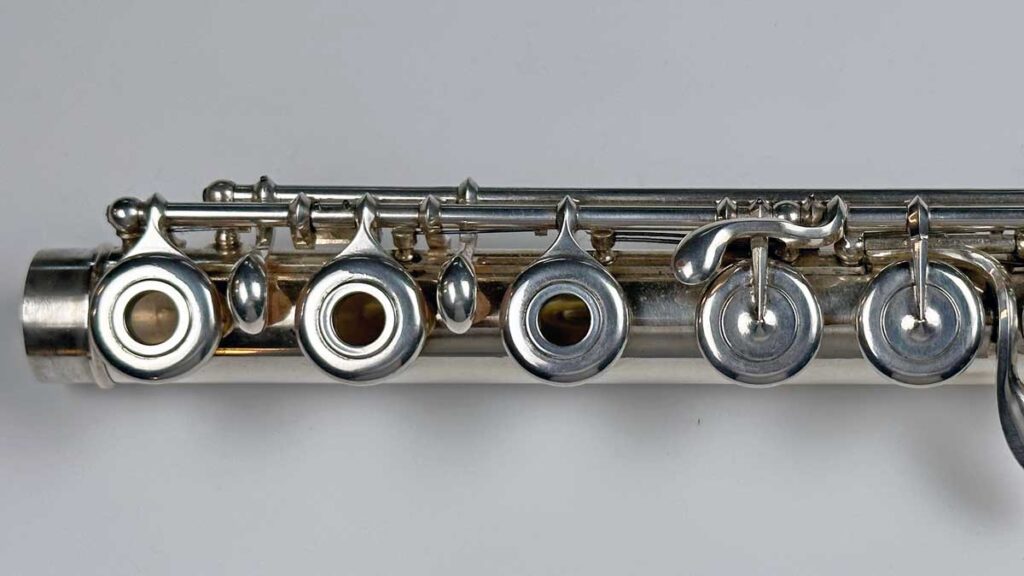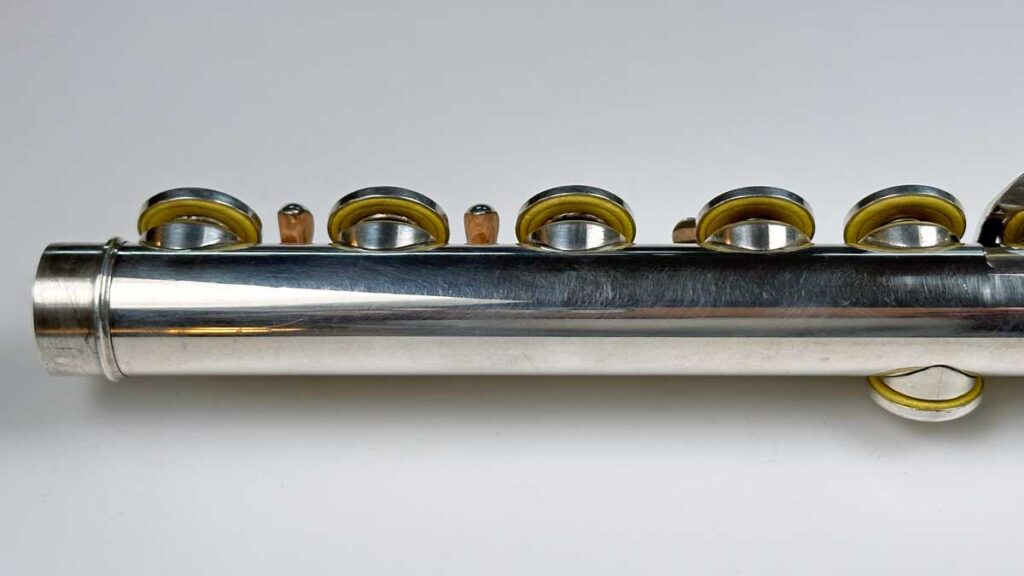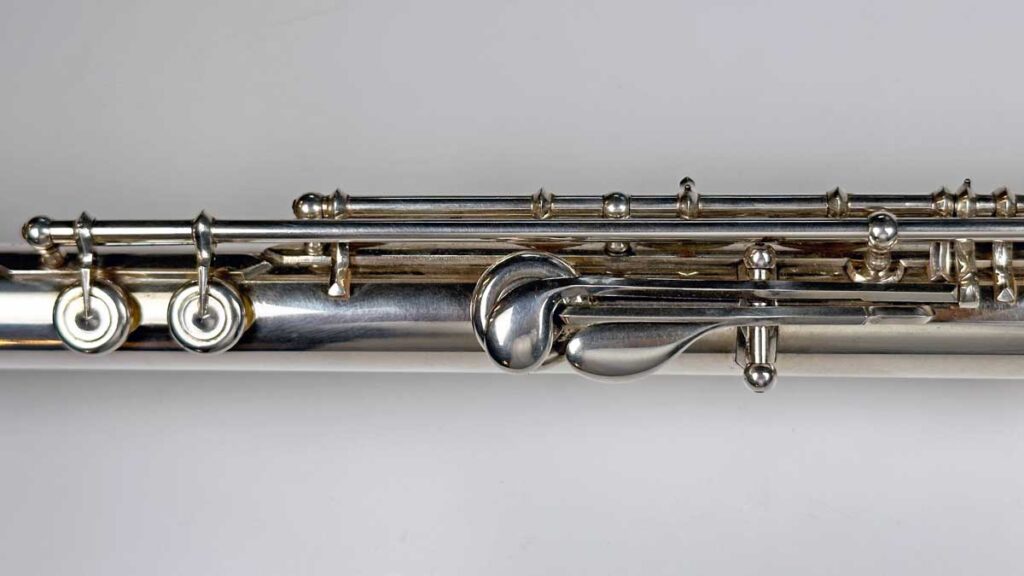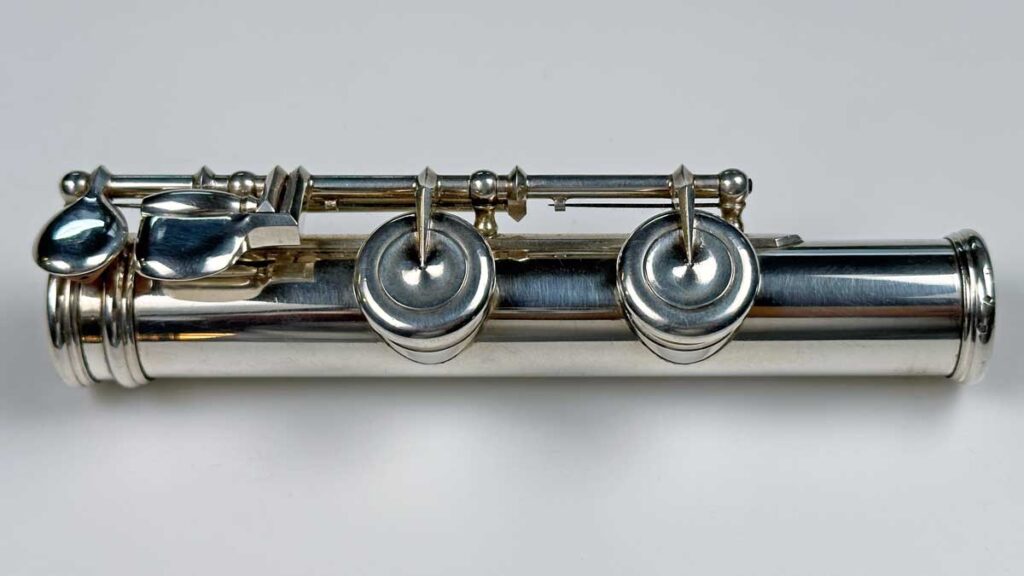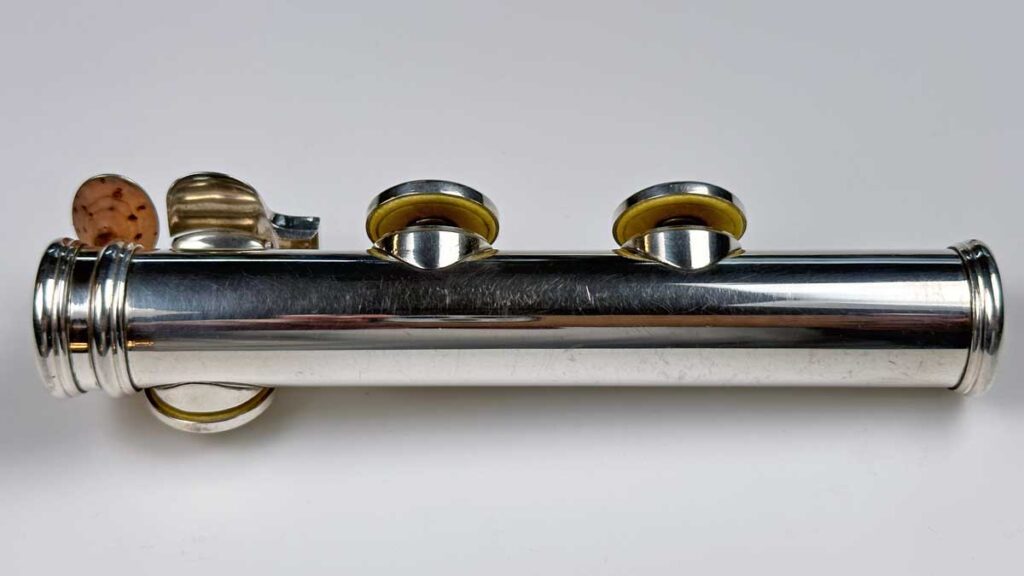- Made in 1892
- Sterling silver
- 0.014″ seamed tubing
- Soldered toneholes
- Pointed keys
- Open hole
- Inline G
- C-foot
- Embouchure: 10.5 mm x 12.0 mm
- Traditional Scale
- A=440 Hz
- Headjoint sounding length: 149 mm
- Flute sounding length: 599.5 mm
- 421 grams
For a flute that is 130 years old, this one is in remarkable condition and well-preserved. All parts of this flute are original. There are no signs of alterations of any kind. The current owner purchased this flute from a dealer in France. Our only information about its history is that it came from a wealthy French family. Given the condition of the case and flute, we suspect that an amateur musician purchased the flute and maintained it very well. Perhaps after his (or her) passing, the family stored the flute in a drawer or closet for several generations until current family members sold it to a music dealer.
The flute is from the Barat generation of Louis Lot flutes. The toneholes and head joint length are unmodified. The mechanism shows very little wear.
The original lip plate had a smaller embouchure (10.2 mm x 11.8 mm). The current owner preferred a slightly larger embouchure, so he commissioned Gary Lewis to swap the lip plate with another from a Louis Lot flute, also from the Barat era. (The original lip plate will be included, so this alteration is reversible. Both lip plates are unmodified.)
The flute has the classic French sound – bright, colorful, lively, and uniquely French. Tone colors and dynamics are consistent throughout the registers. The low register is full and rich; the upper registers are vibrant and shimmer with brightness, befitting for a soloist.
The scale is traditional for the late 1800s and plays most reliably at A=438 Hz with the headjoint at 1/4″. The flute also plays well at A=440 Hz with the headjoint pulled out to 1/16”-1/8”.
New pads were installed in early 2023. They are in excellent condition and will last many years with regular playing. The soldering around the toneholes also seals well and has very little oxidation, likely because the family safely stored the flute for several generations.
The case comes complete with a key, which owners often lose over time. So, we are pleased that the key completes this setup. It’s like a cherry on a sundae.
Overall, this is a well-preserved flute. You will be hard-pressed to find a Louis Lot flute from the Barat era with its original headjoint tenon intact and very little wear on the mechanism. A flute of this age and preservation is exceedingly rare.
SOLD
